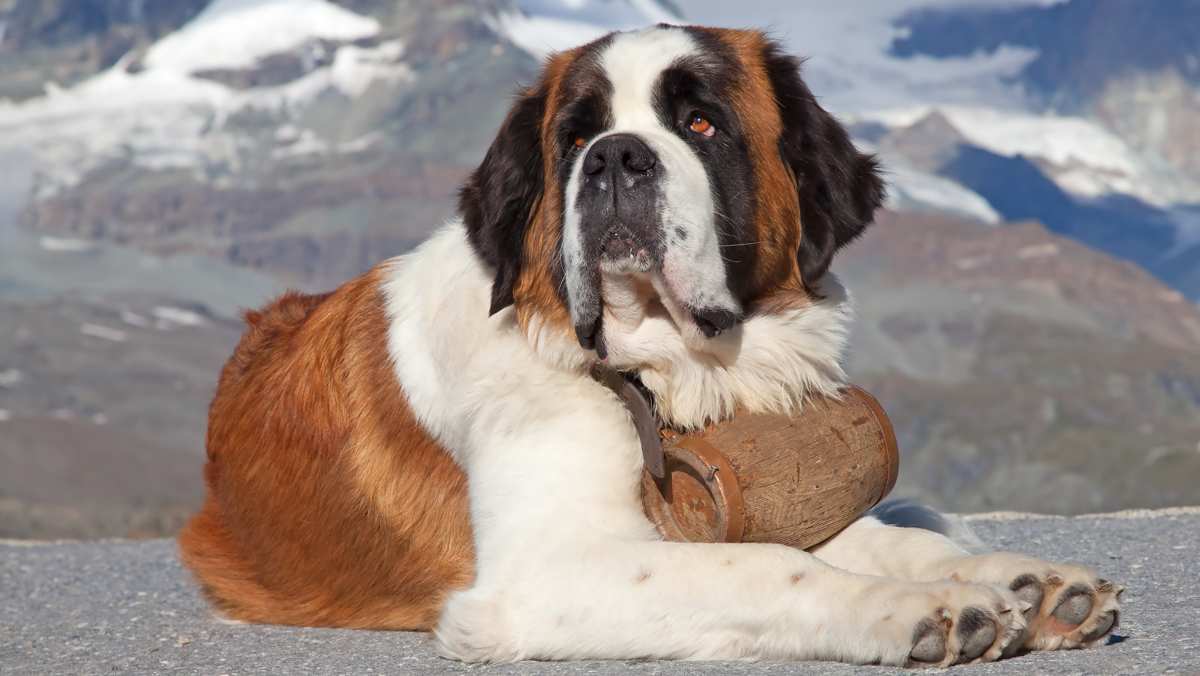Saint Bernard history is as shrouded in mystery as the deadly snowstorms of the region from which the breed emerged. It is thought that the Romans took large Asian molosser dogs into the Swiss mountain pass around 100-200 A.D. Those dogs naturally mated with native dogs and this is thought to be where Saint Bernards are from. During that time, Roman emperors saw to developing the pass, making it highly protected, and building a temple to Jupiter at the top. This building also served as a waypoint for travelers, for it was a fatally harsh environment.
For several centuries, however, the dog was not noted. First came a painting by Salvatore Rosa around 1690, and then, early in the following century, the first known written record was recorded. Toward the end of the 18th century, the dogs started to be recognized by other artists who wrote home as well as painted the dogs. In the early 19th century, the near-extinction of the breed seemed to have prompted people to recognize the dog's vast importance in saving lives. The winter storms that took place between 1815 and 1820 resulted in a great many of these dogs dying while attempting rescues. Just prior to that, the most famous Saint Bernard, Barry, performed his legendary work from 1800 until 1812, when he died. During that period, he was said to have saved at least 40 people. Around the time the winter storms were starting to take their mortal and canine cost in 1815, Barry was enshrined at the Natural History Museum in Berne, Switzerland. His body remains there to this day.
After the first great and cruel set of storms of the century, monks started cross-breeding the dogs with Newfoundlands. The belief was that the longer hair would better protect the dogs. Instead, it led to quicker and more possible death, for the considerably longer hair would freeze through with ice.
During this time, the dog remained without a formal name. They were called, variously, Alpine Mastiffs, Holy Dogs, Hospice Dogs, Monastery Dogs, Mountain Dogs, Saint Bernard Mastiffs, and Swiss Alpine Dogs. Some even called them Barry Dogs in honor of that great Bernard in the sky. It was not until 1880 that the name Saint Bernard was universally applied.
Soon thereafter, the first club was started: the Swiss St. Bernard Club in Basel (Switzerland) in 1884. One year later, in 1885, the AKC formally recognized the dog. It took another four years, to 1888, before a breed standard was accepted. The dog's original usefulness was waning, however, and the last recorded rescue was in 1897. During the 200-plus years that the breed's rescues were recorded, some 2,000 people had been successfully rescued by them.
As for the St. Bernard keg history? More about that legendary myth may be found elsewhere on this page, under the other notes.









